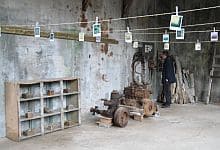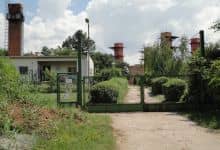- Details
To Morpeth for Heritage Open Days, and the circus trail devised by November Club and St Robert's First School. Organised by the Greater Morpeth Development Trust and funded by the Arts Council, the pupils devised a trail around Morpeth based on the true story of an escaped circus elephant. Read more at [link removed 12/12/23 as no longer in existence].
- Details
To the British Museum to see the outstanding gold jewellery and ornaments, and other exceptional finds from Afghanistan's National Museum. These objects, some dating to c2000BC, were hidden away by museum staff at the time of the Soviet occupation, for safe keeping, and have only recently been brought back into view. In contrast at the Foundling Museum, a couple of streets or three away, are the pieces of fabric and other tokens given by mothers to identify their children which they took to the Foundling Hospital in the hope that the Hospital would be able to look after them. Time again to reflect on the poignancy and meaning of objects.
- Details
 On the East coast of the West Fjords in Iceland lies the village of Djúpavík, where the former herring factory now houses exhibitions of contemporary art - you can read about it here (link removed as no longer exists). Showing at the factory in August is New Work by Anthony Bacigalupo and Tim L Schafer, and Claus Sterneck's Pictures and Their Sounds. Sigur Rós played in one of the fish oil tanks - you can watch it on their Heima DVD. The former hostel for female workers at the factory is now the friendly and welcoming Hotel Djúpavíkwith live music and the best fish buffets. Fish and Art are not confined to Djúpavík; the design store Kraum in Reykavík has lights made of the skins of whole fish, and fish leather is used for clothing and accessories.
On the East coast of the West Fjords in Iceland lies the village of Djúpavík, where the former herring factory now houses exhibitions of contemporary art - you can read about it here (link removed as no longer exists). Showing at the factory in August is New Work by Anthony Bacigalupo and Tim L Schafer, and Claus Sterneck's Pictures and Their Sounds. Sigur Rós played in one of the fish oil tanks - you can watch it on their Heima DVD. The former hostel for female workers at the factory is now the friendly and welcoming Hotel Djúpavíkwith live music and the best fish buffets. Fish and Art are not confined to Djúpavík; the design store Kraum in Reykavík has lights made of the skins of whole fish, and fish leather is used for clothing and accessories.
- Details
 Unlike Soviet Socialist Realism, where everyone is looking serious and determined, contemporary art in North Korea portrays everyone as full-faced, rosy-cheeked and smiling in honour of Kim Il Sung and Kim Jong Il - at MAK in Vienna, in the summer of 2010. Read about the exhibition here.
Unlike Soviet Socialist Realism, where everyone is looking serious and determined, contemporary art in North Korea portrays everyone as full-faced, rosy-cheeked and smiling in honour of Kim Il Sung and Kim Jong Il - at MAK in Vienna, in the summer of 2010. Read about the exhibition here.
Elsewhere on our holidays we came across the former Soviet tropospheric communications base at Galagamacsa, not far from Budapest, which provided communications to Moscow during the years of Soviet occupation.
"How could you tell which telephone on János Kádár's desk was the hotline to Moscow?" "It was the one on which you could only listen, and not speak!" (Kádár was leader of the Hungarian Communist Party from 1956 to 1988).
